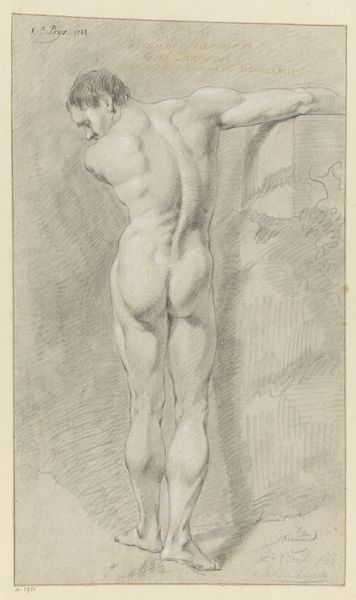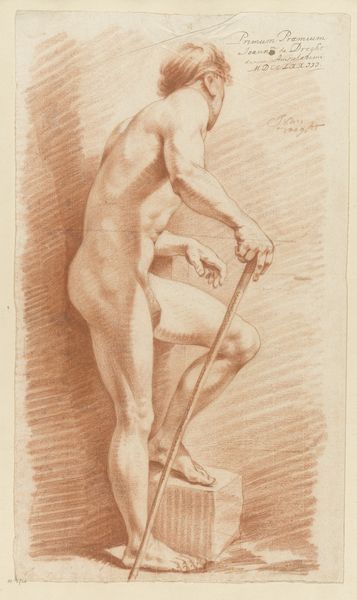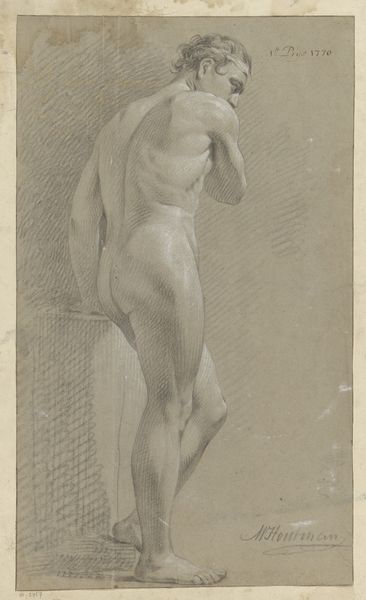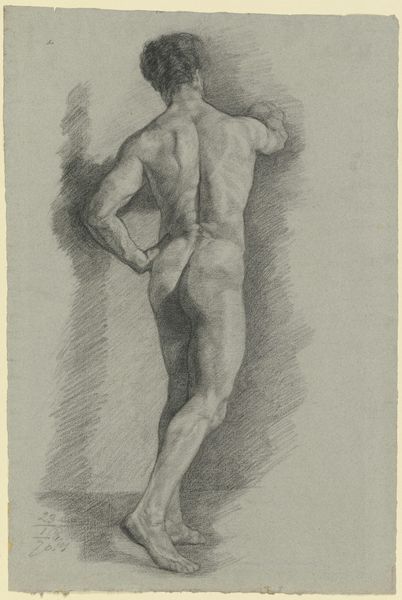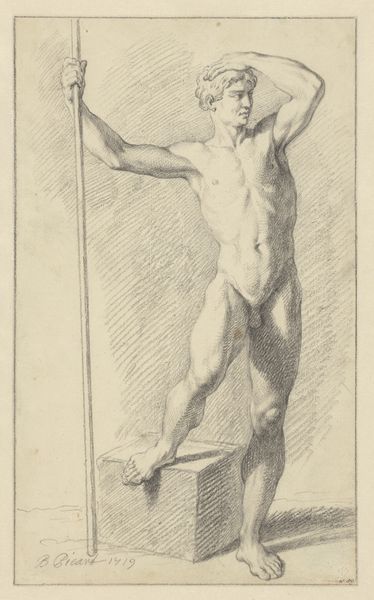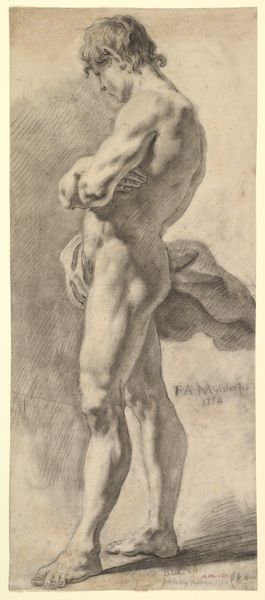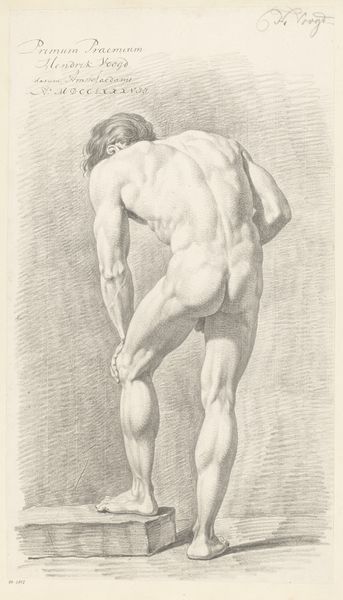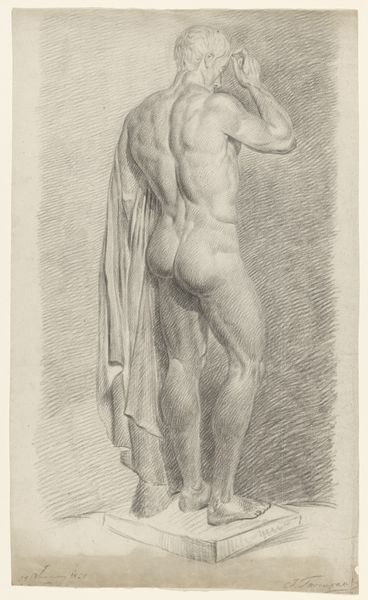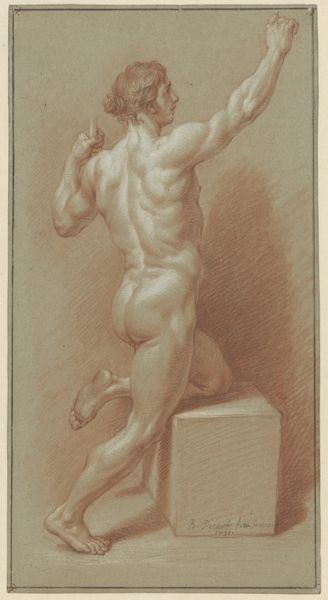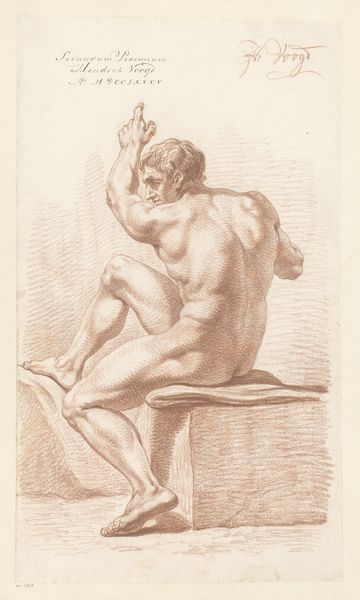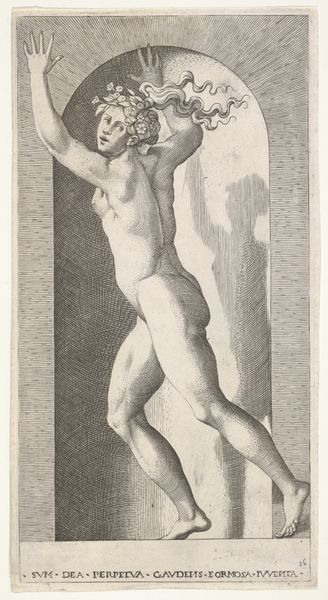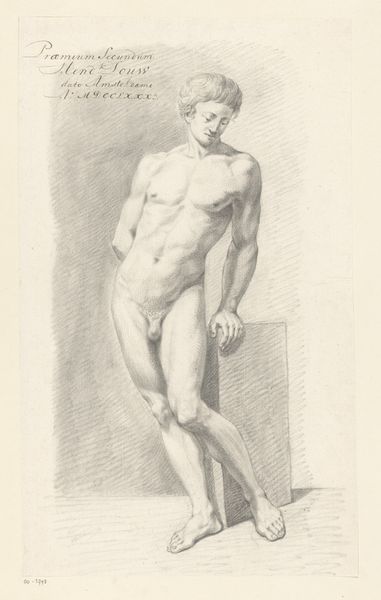
Staand mannelijk naakt, op de rug gezien (2e prijs 1771) Possibly 1771 - 1773
0:00
0:00
pieteriiwagenaar
Rijksmuseum
drawing, pencil, charcoal
#
pencil drawn
#
drawing
#
pencil sketch
#
charcoal drawing
#
figuration
#
pencil drawing
#
pencil
#
pencil work
#
charcoal
#
history-painting
#
academic-art
#
nude
Dimensions: height 553 mm, width 313 mm
Copyright: Rijks Museum: Open Domain
Pieter Wagenaar made this standing male nude in 1771 using graphite on paper. The soft, powdery quality of graphite allows for subtle gradations of tone, seen here in the figure's musculature and the cast shadow. The drawing's material is inextricably linked to its purpose as a study piece, likely made in an academic context. Graphite, as opposed to ink or paint, facilitates quick sketching and revisions. The artist can easily build up layers of shading, achieving a sense of depth and volume. Looking closely, you can see the evidence of Wagenaar's hand as he explored the contours and proportions of the human form. This drawing reflects the values of the 18th-century art world, in which mastery of drawing was considered fundamental to artistic training. The process of depicting the nude male body, a practice dating back to antiquity, was intended to instill ideals of beauty, proportion, and anatomical accuracy. Appreciating the material qualities of this artwork allows us to recognize the labor and skill involved in its creation, reminding us that even seemingly simple drawings can hold a wealth of artistic and cultural significance.
Comments
No comments
Be the first to comment and join the conversation on the ultimate creative platform.
